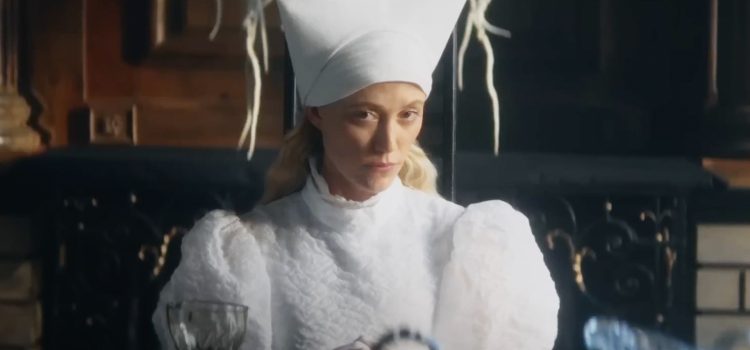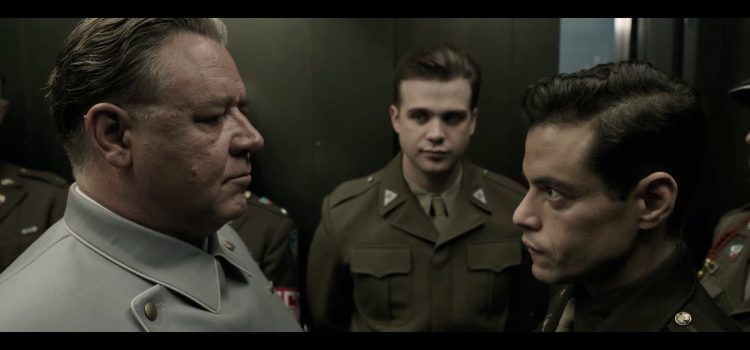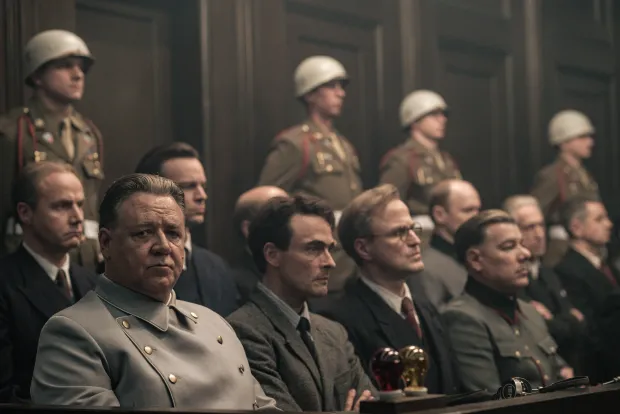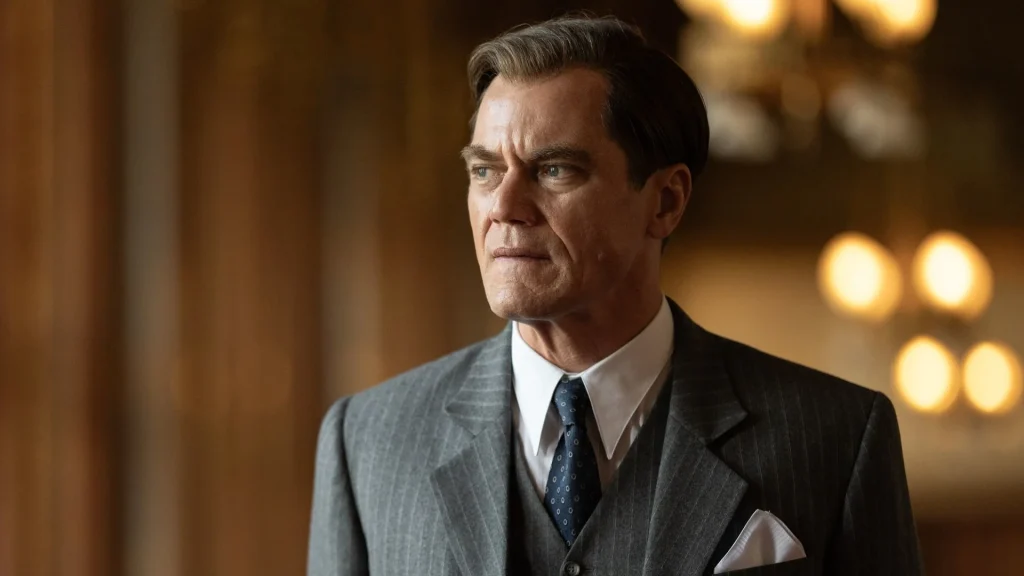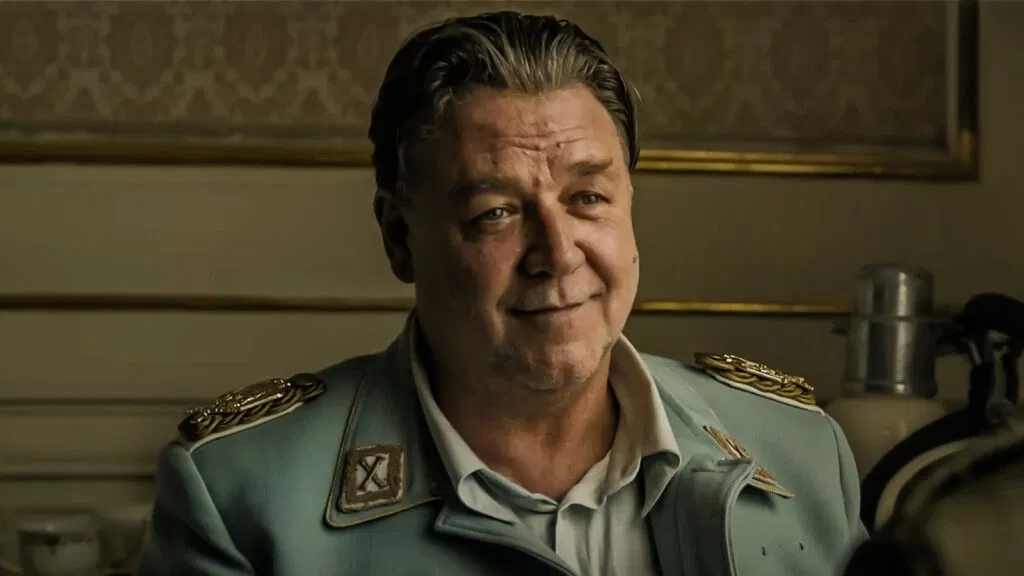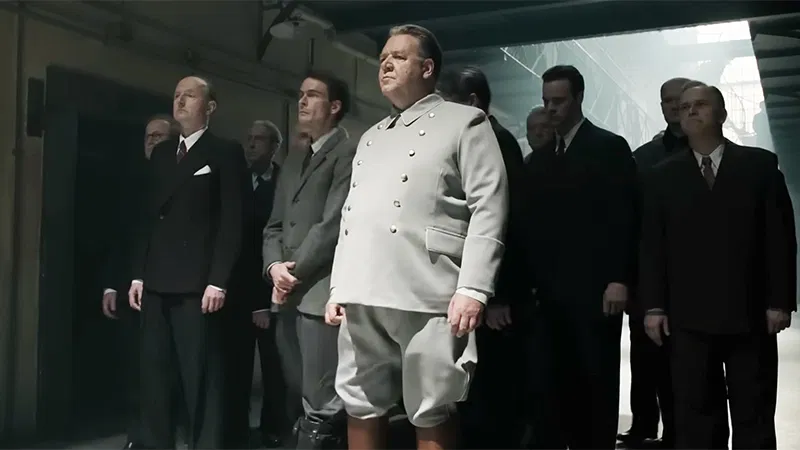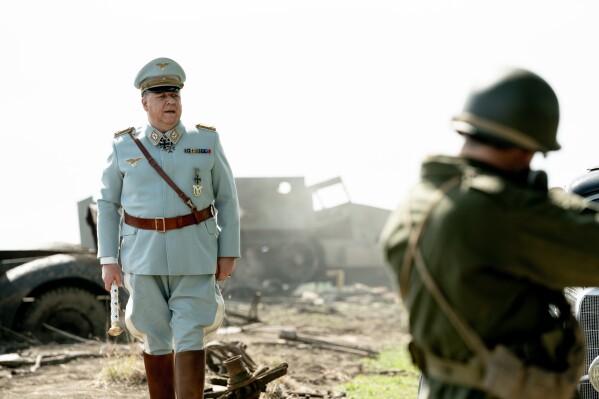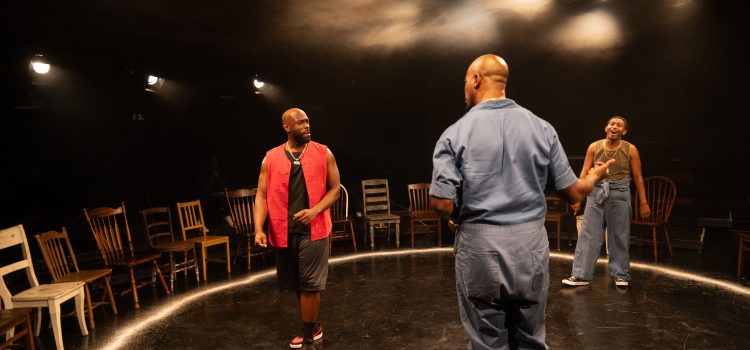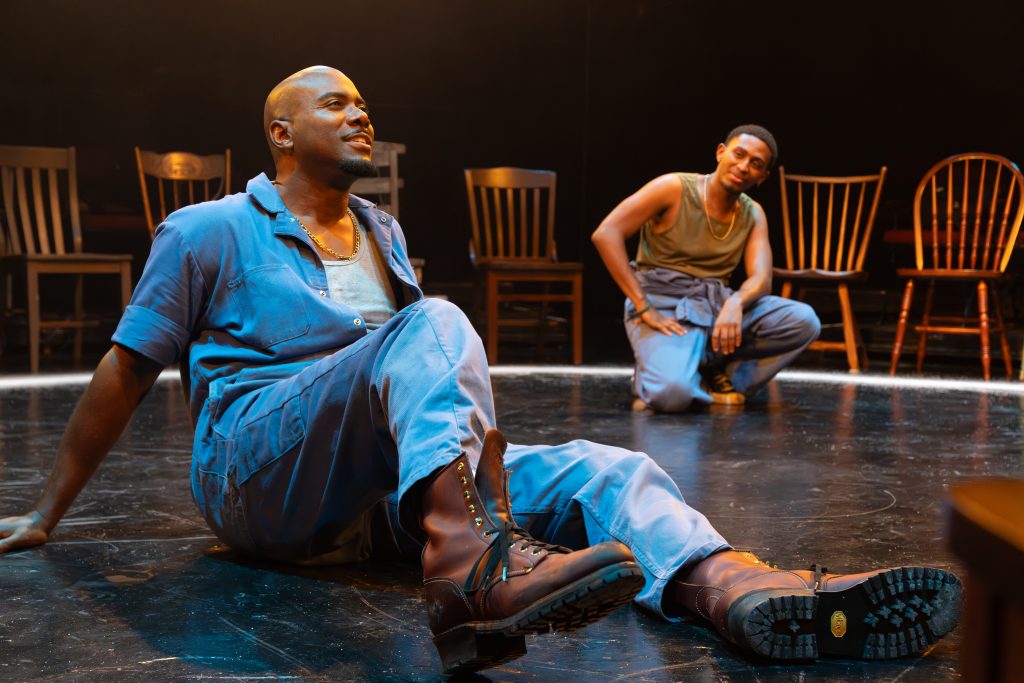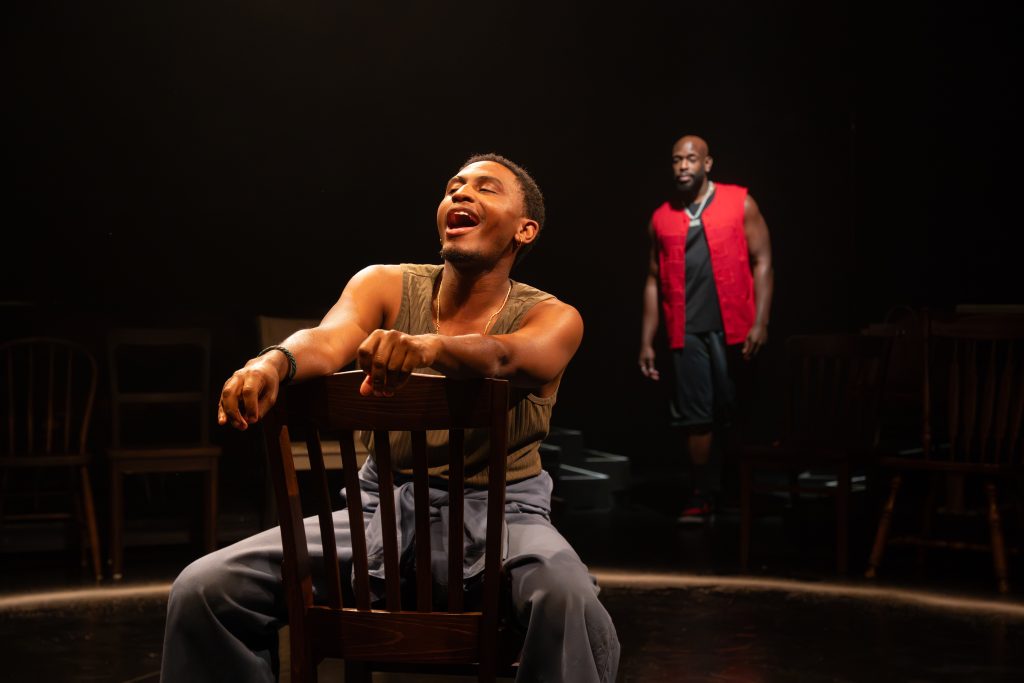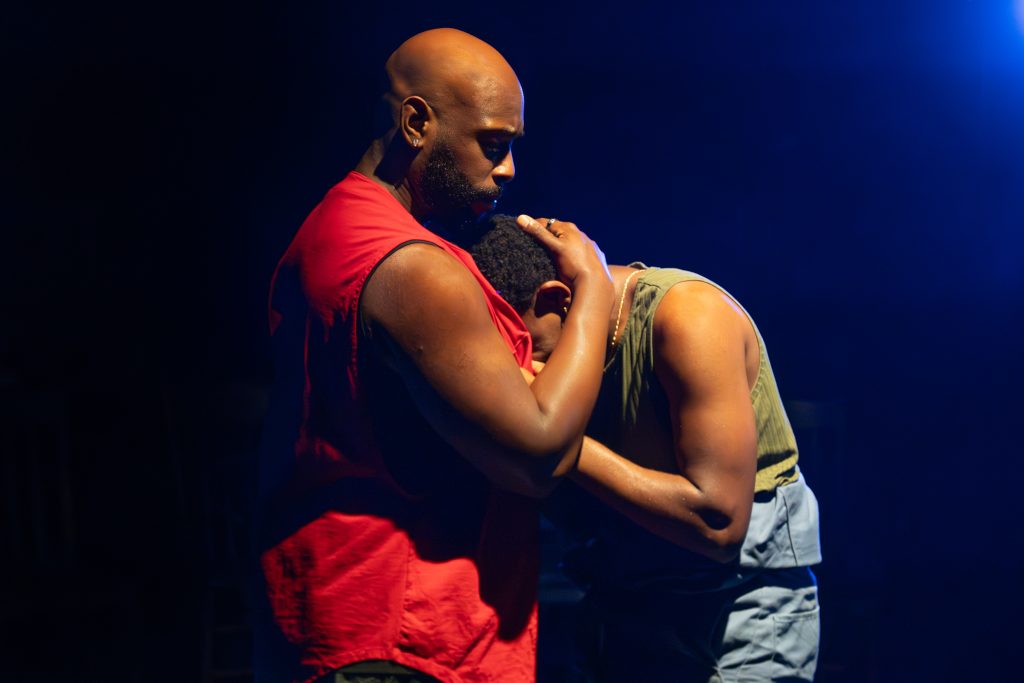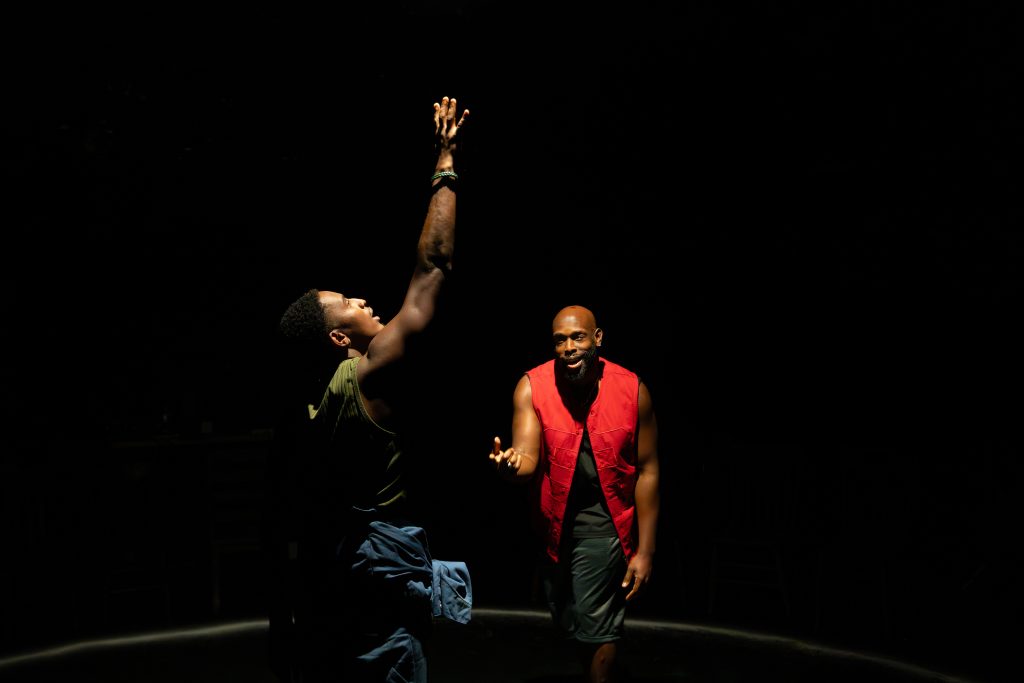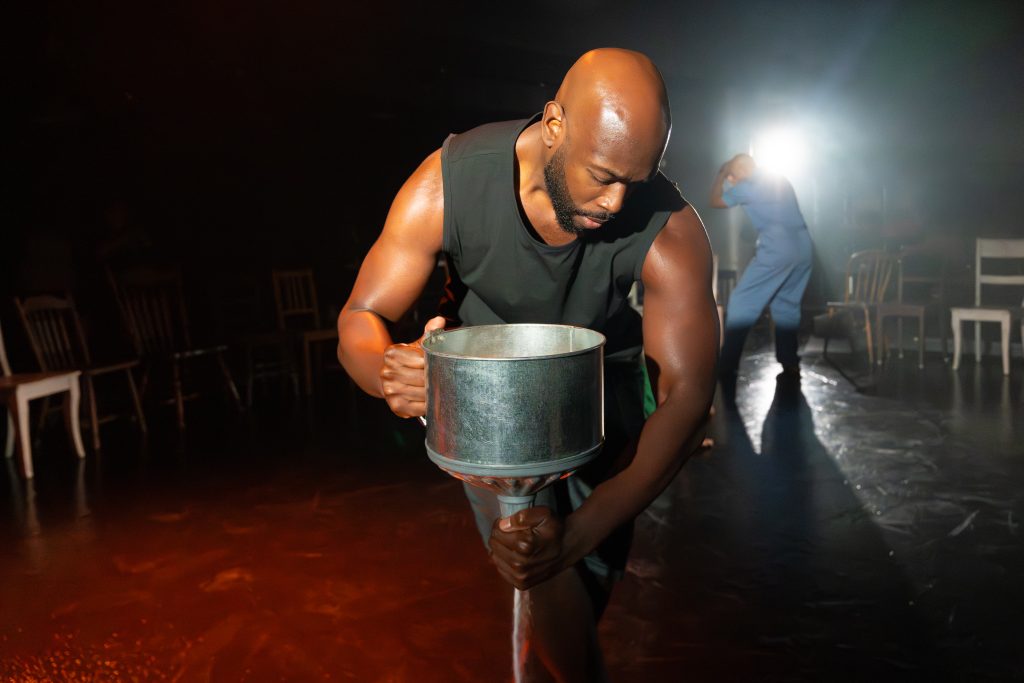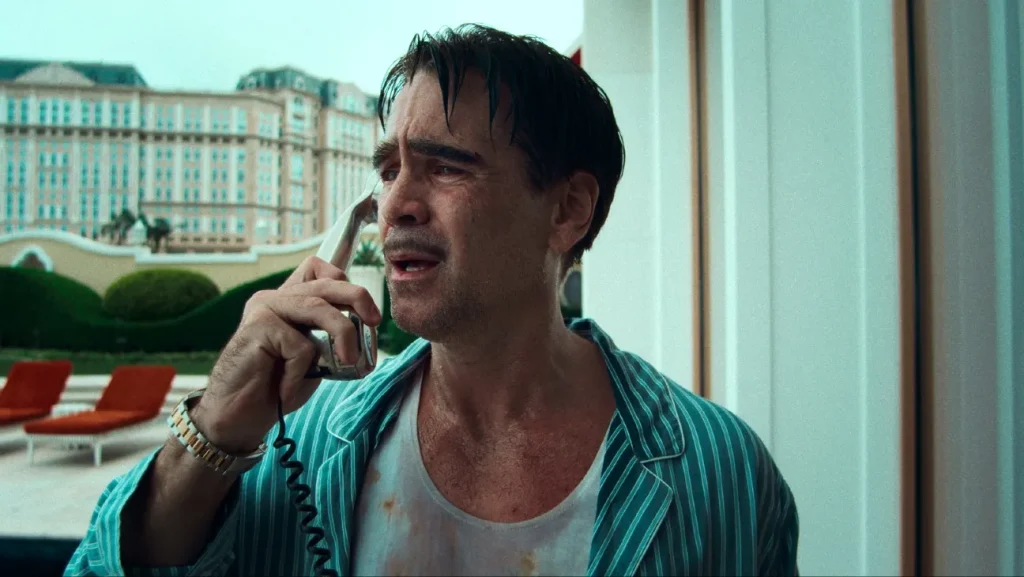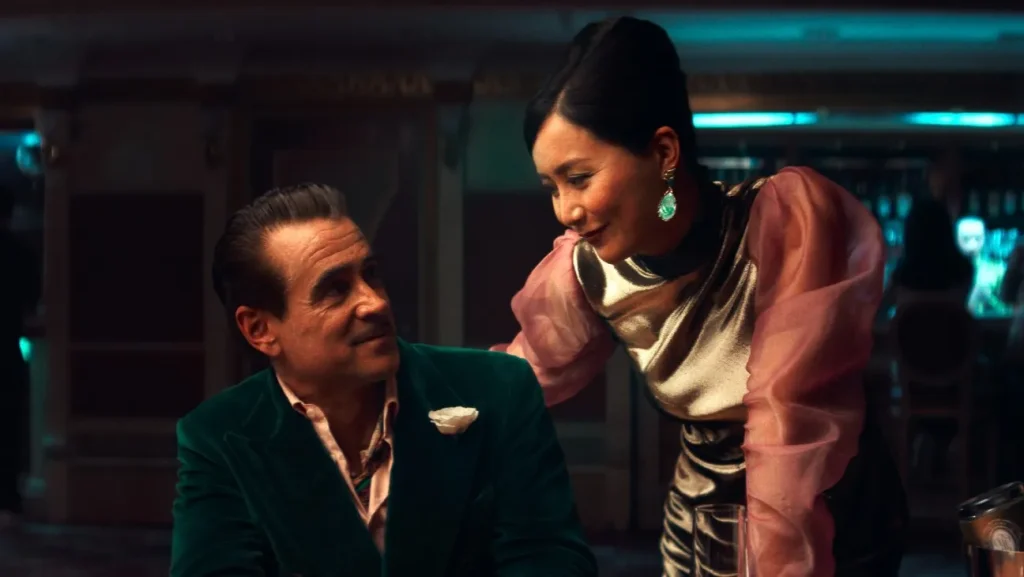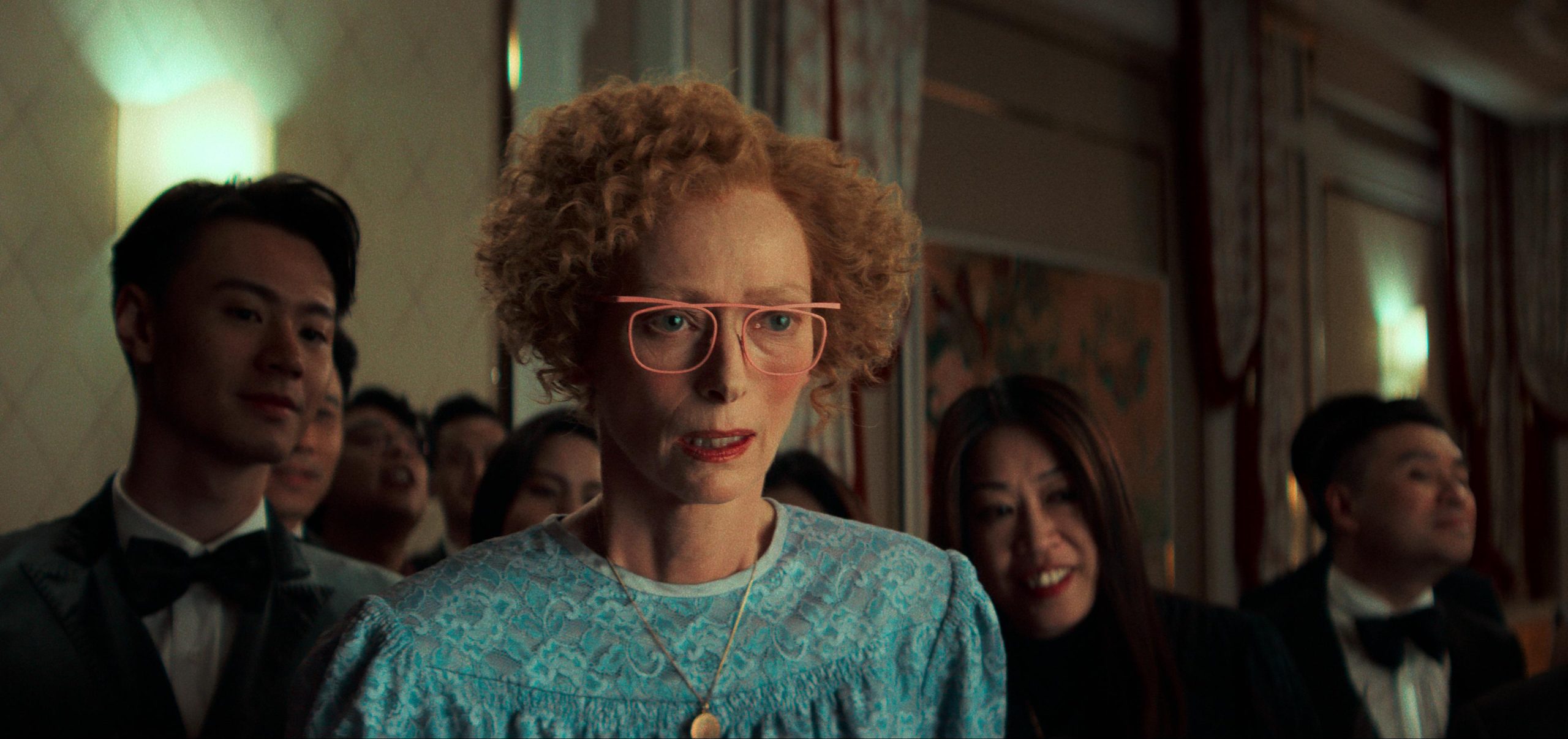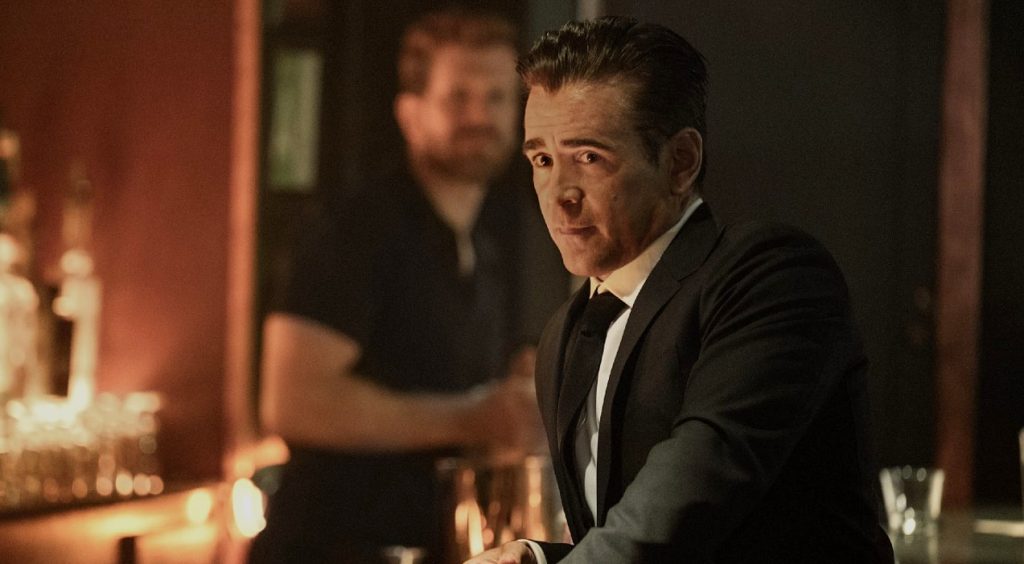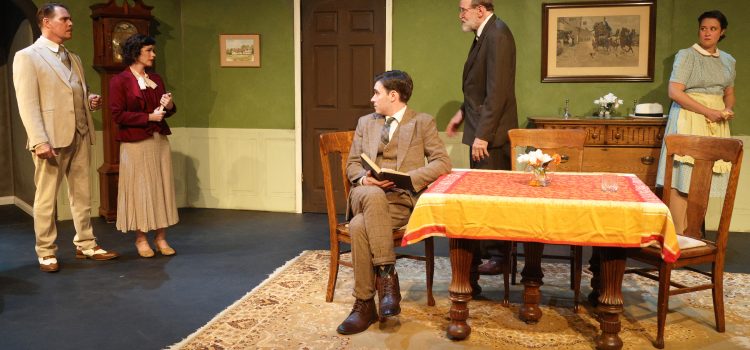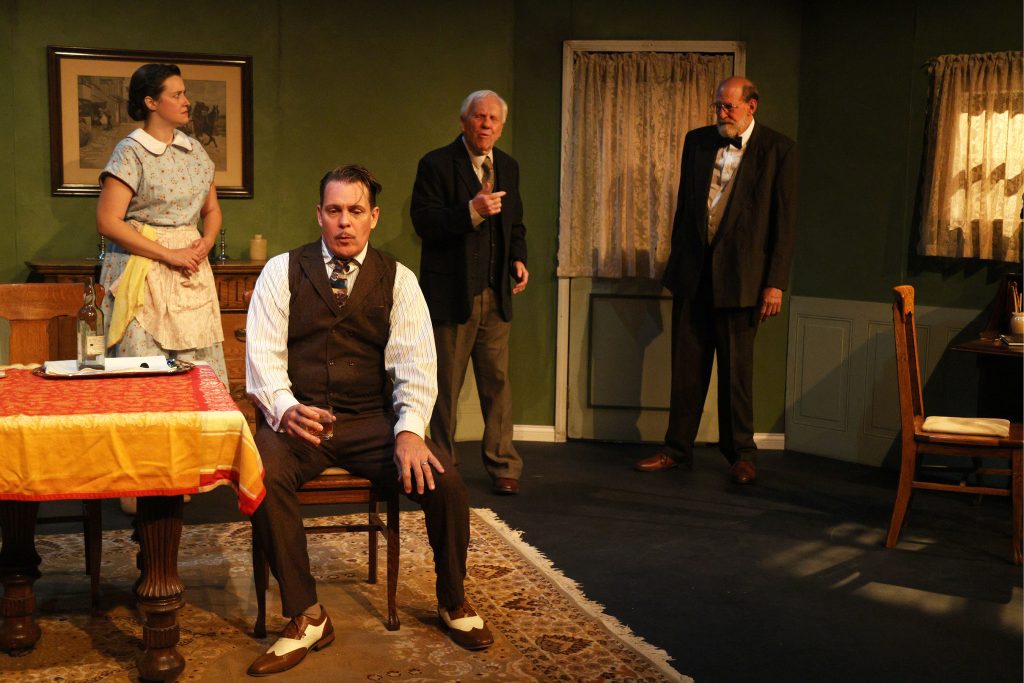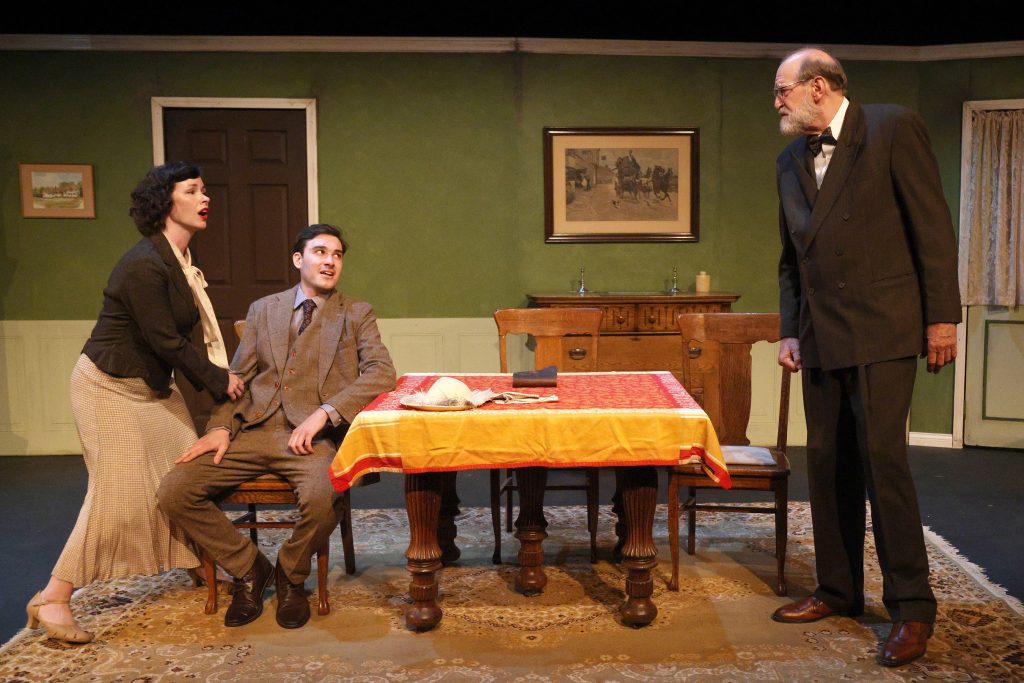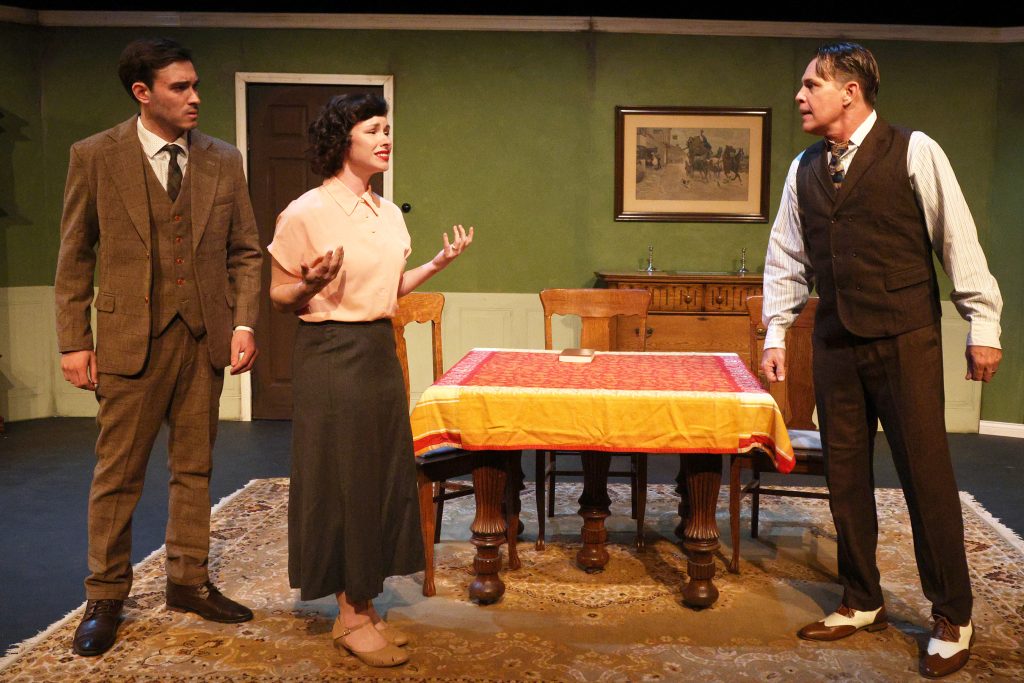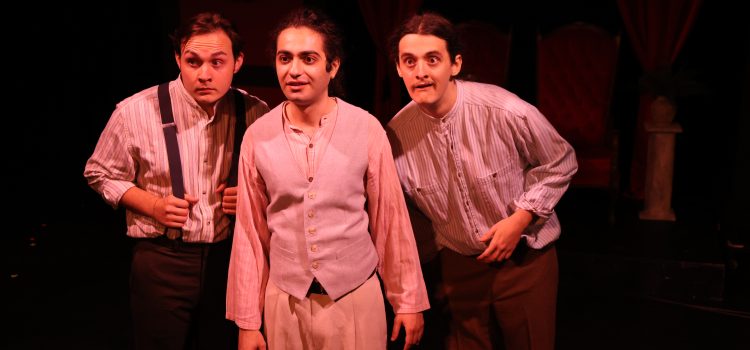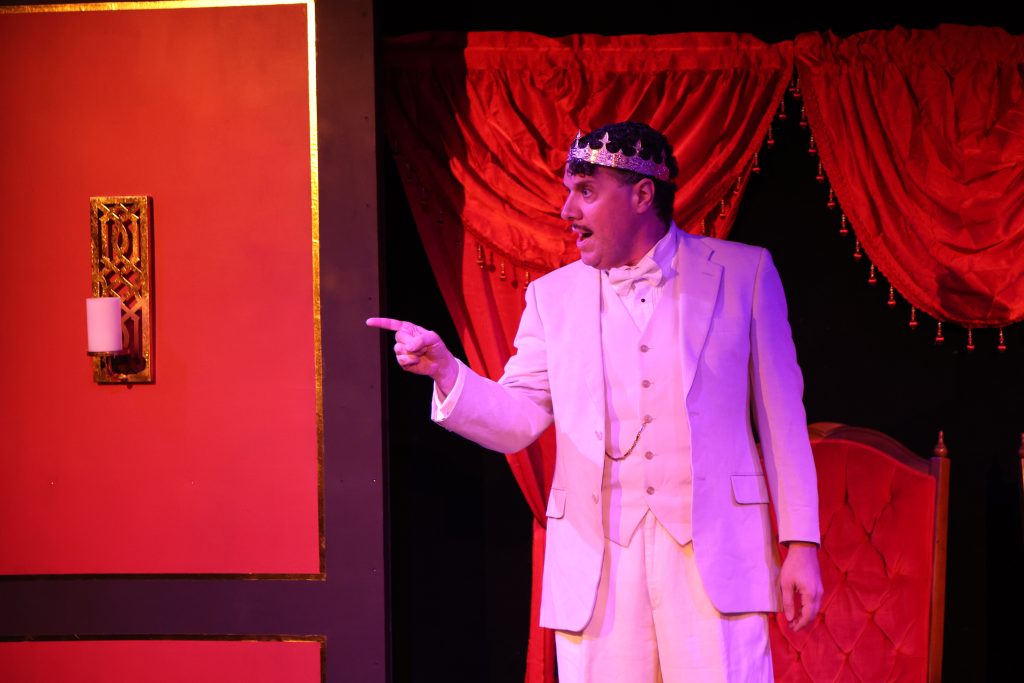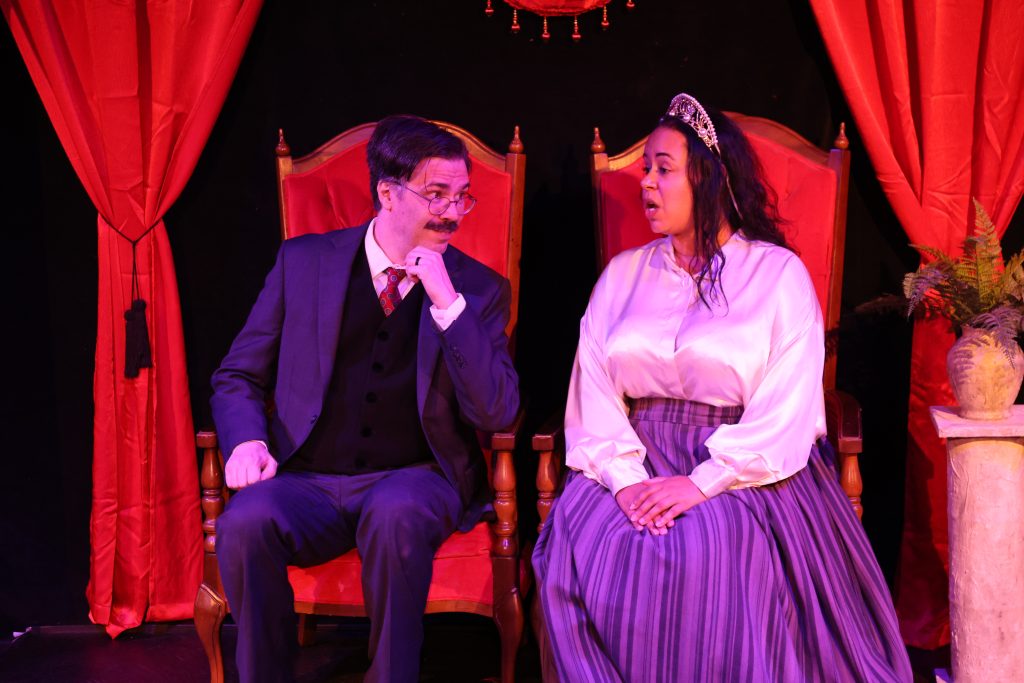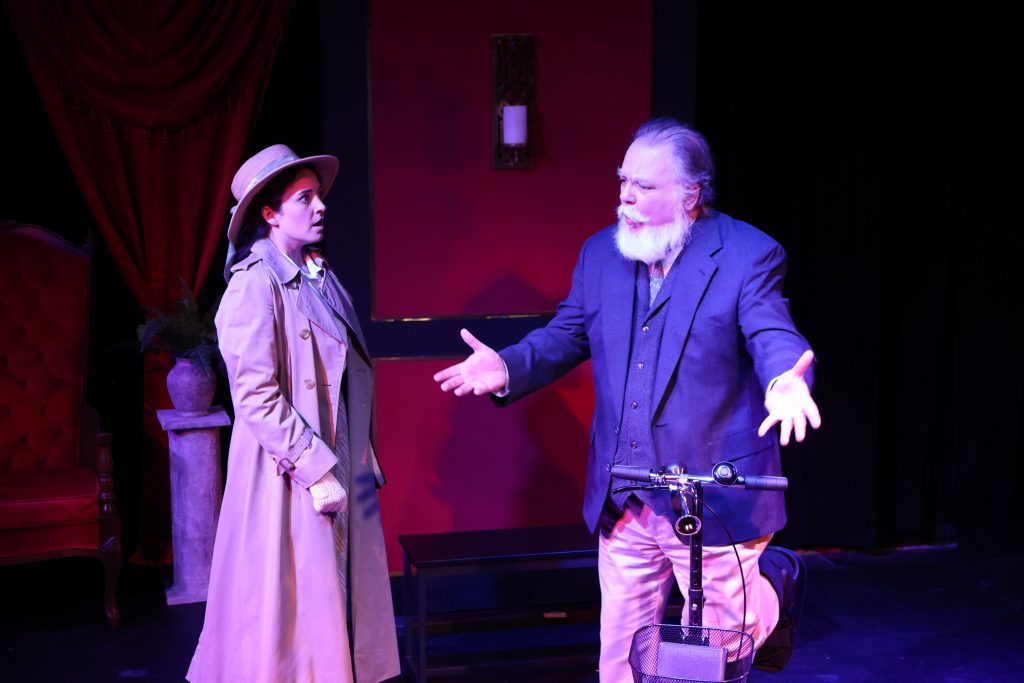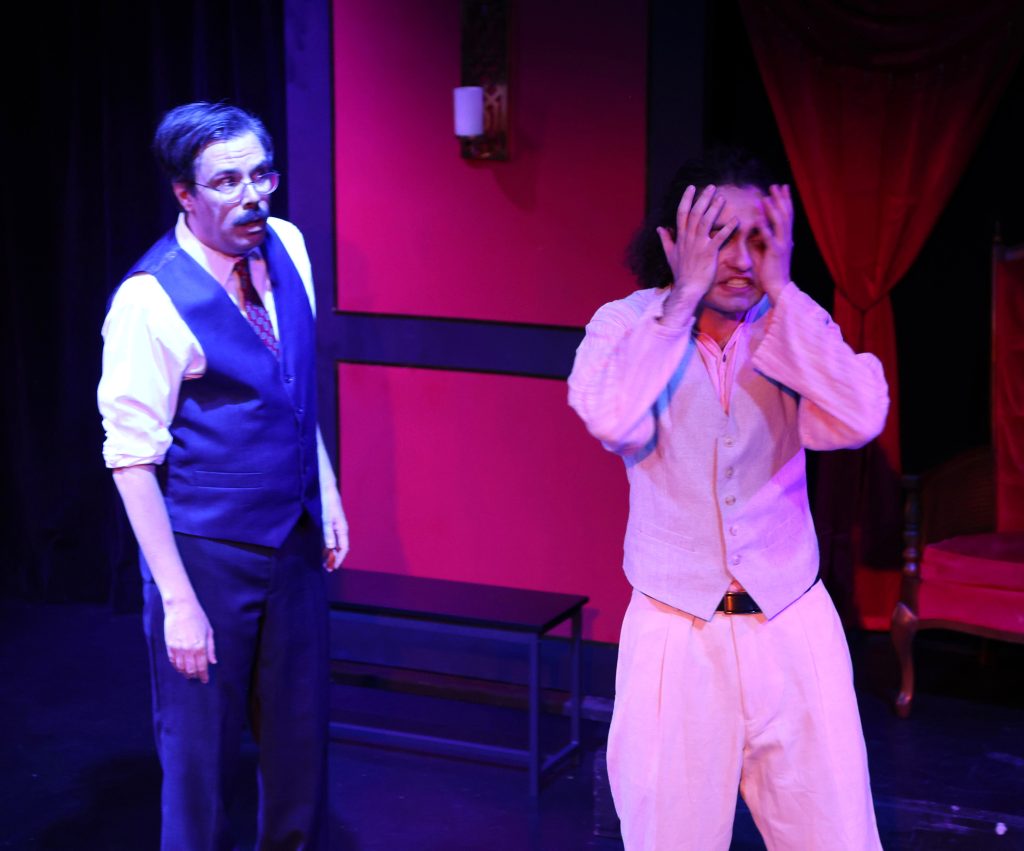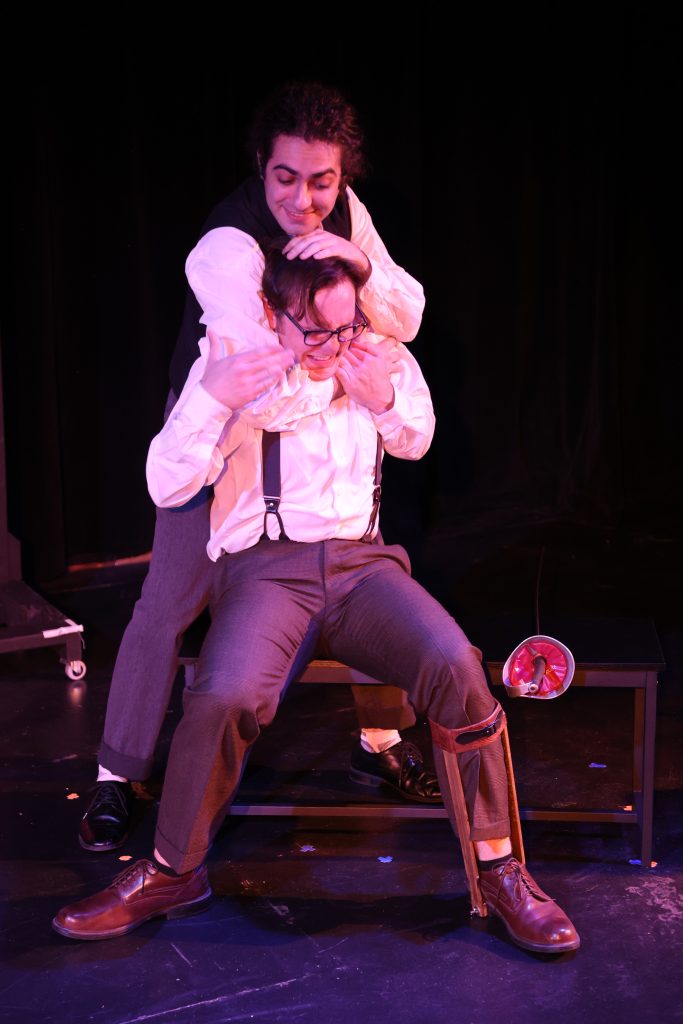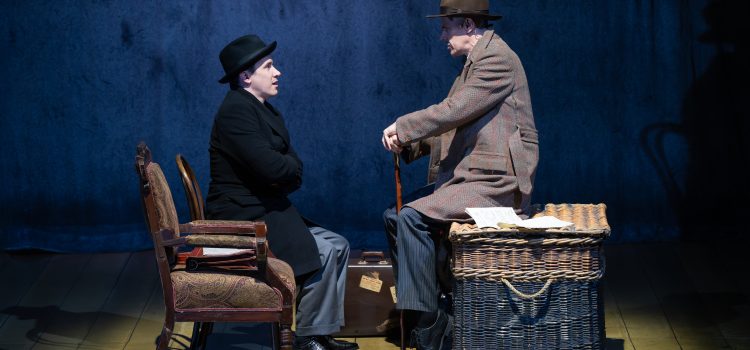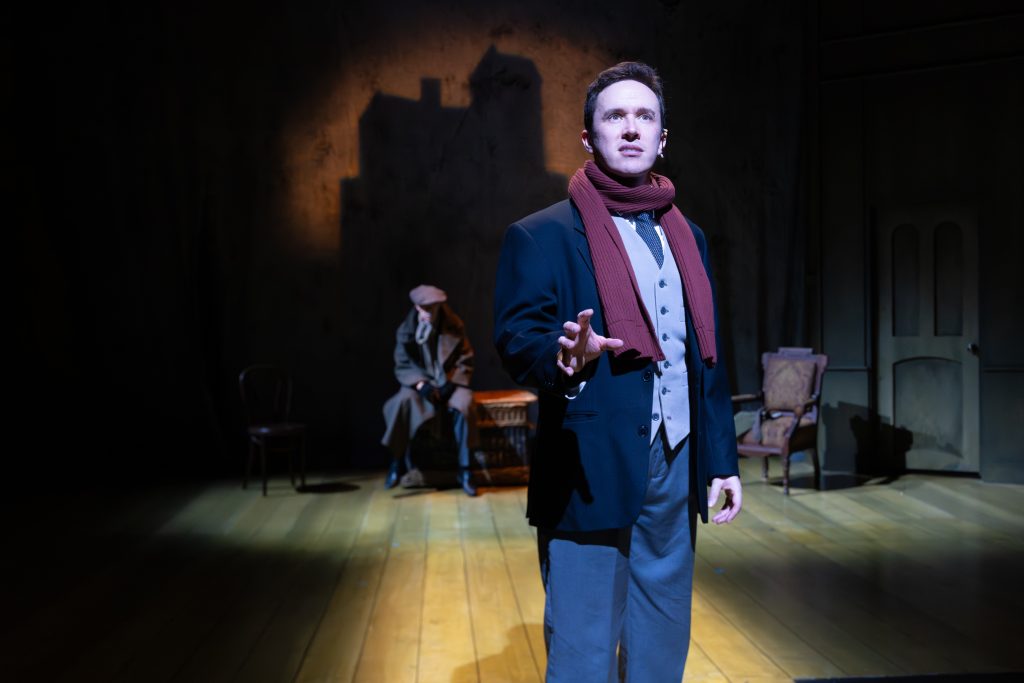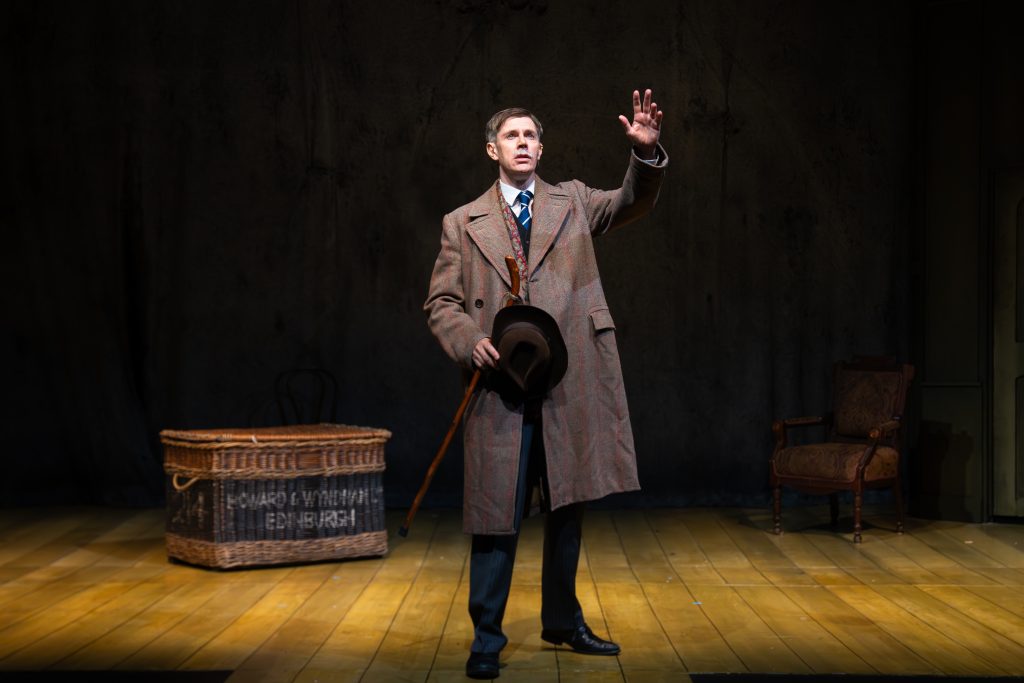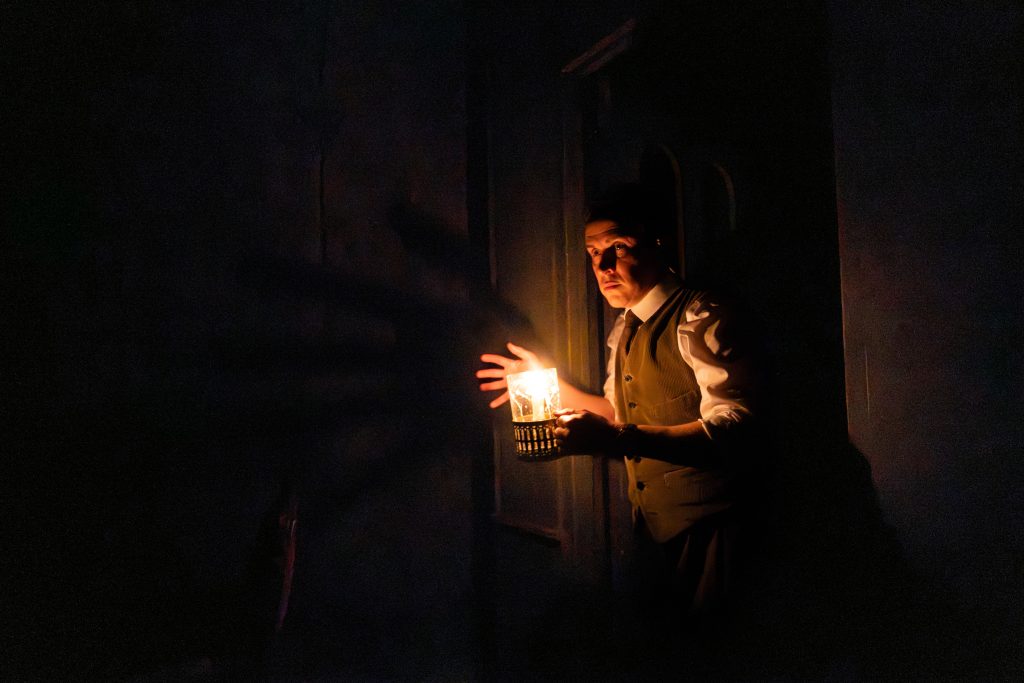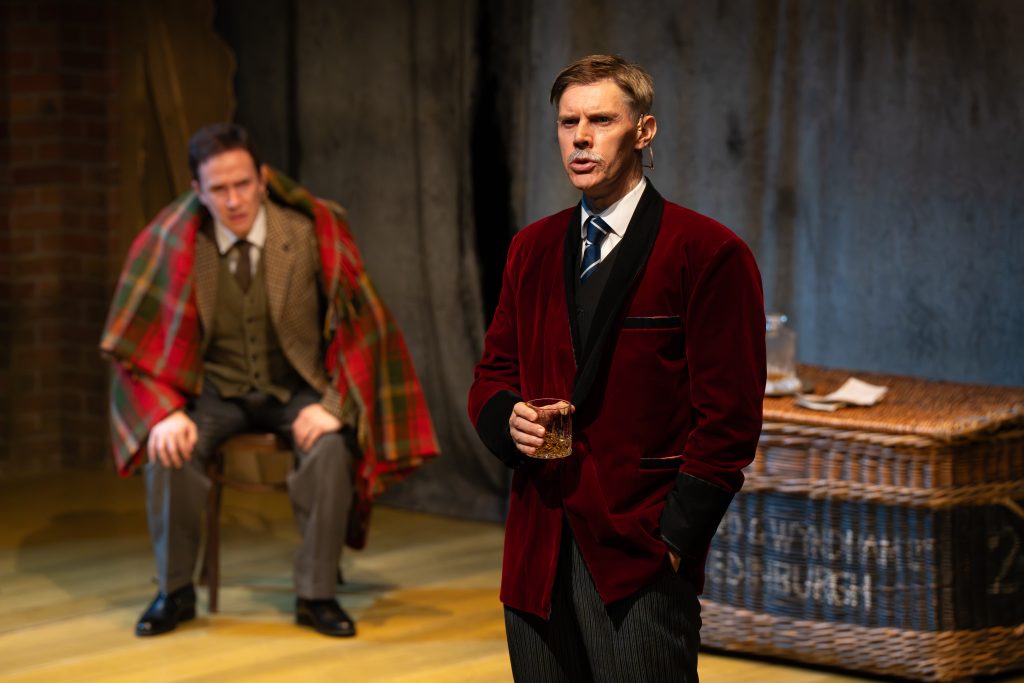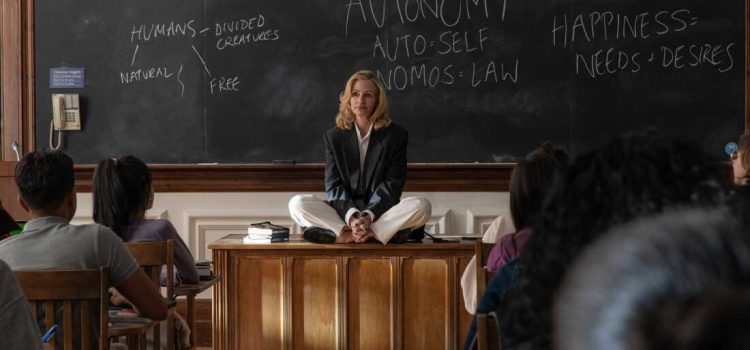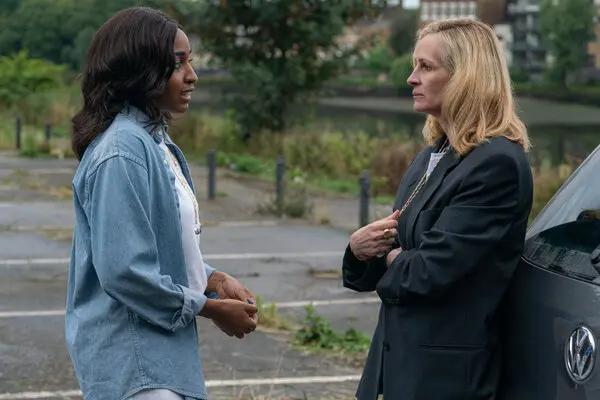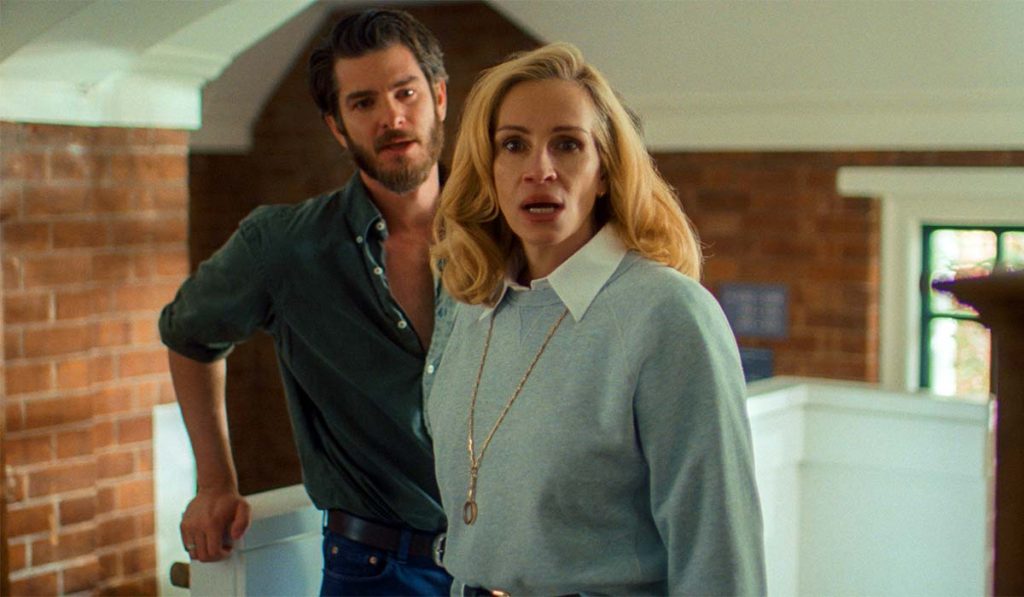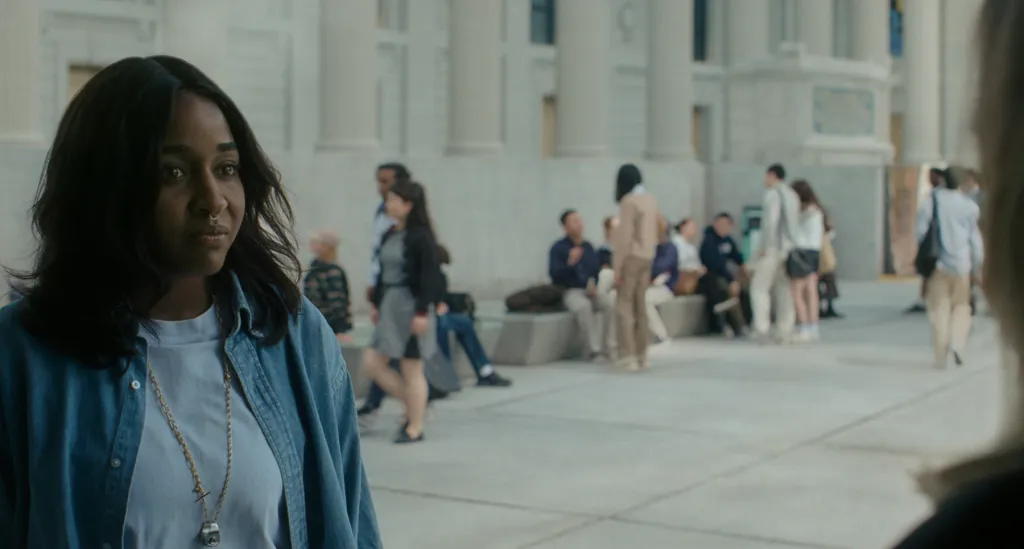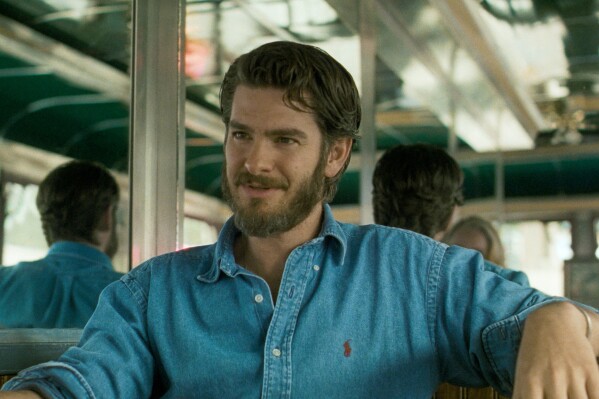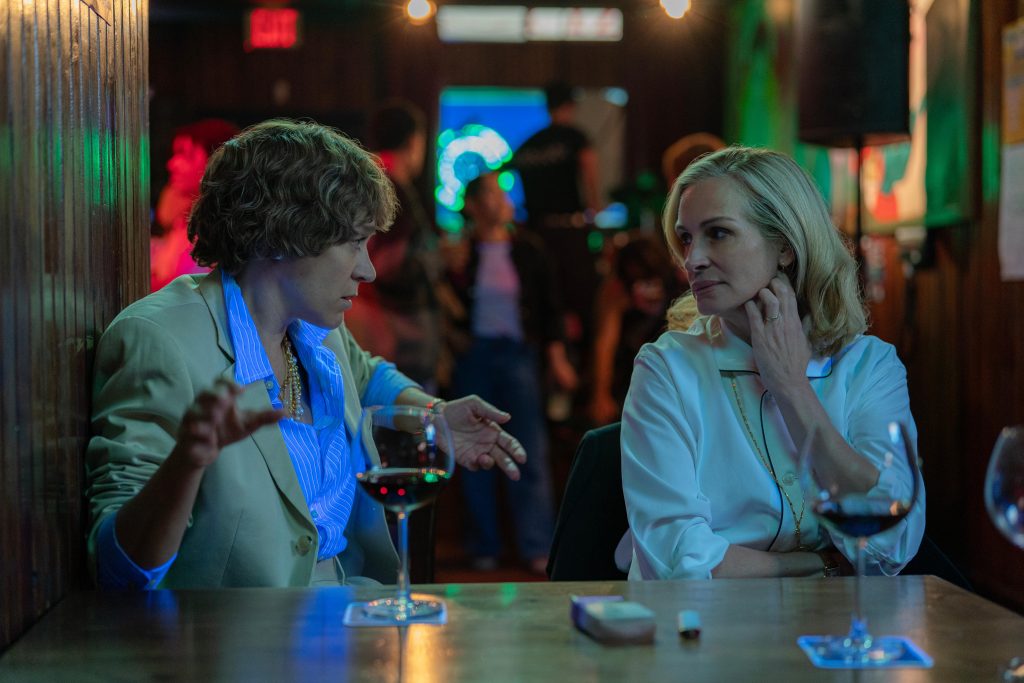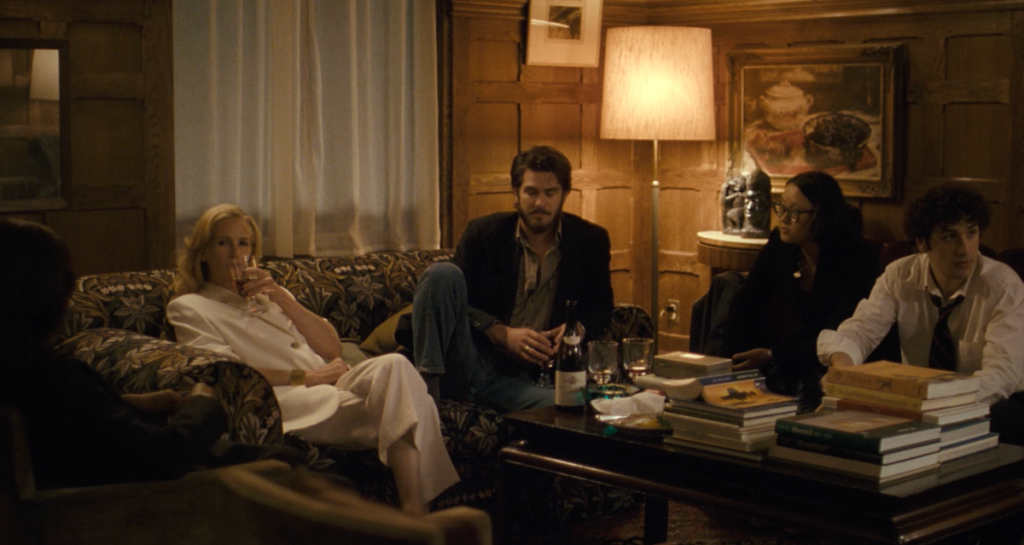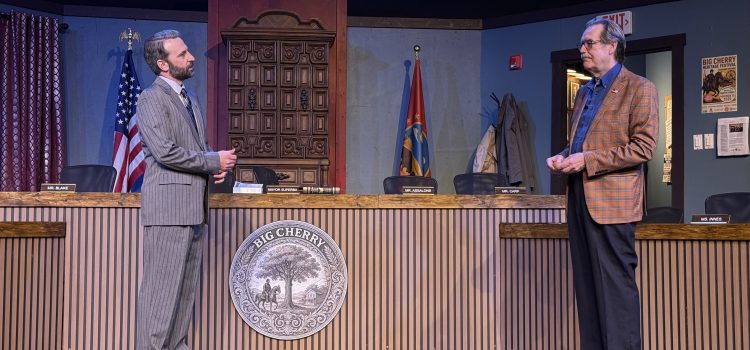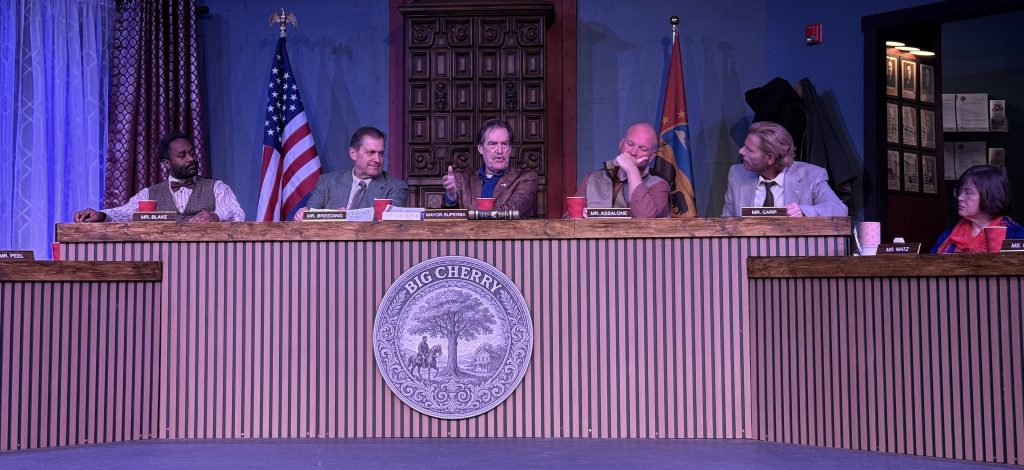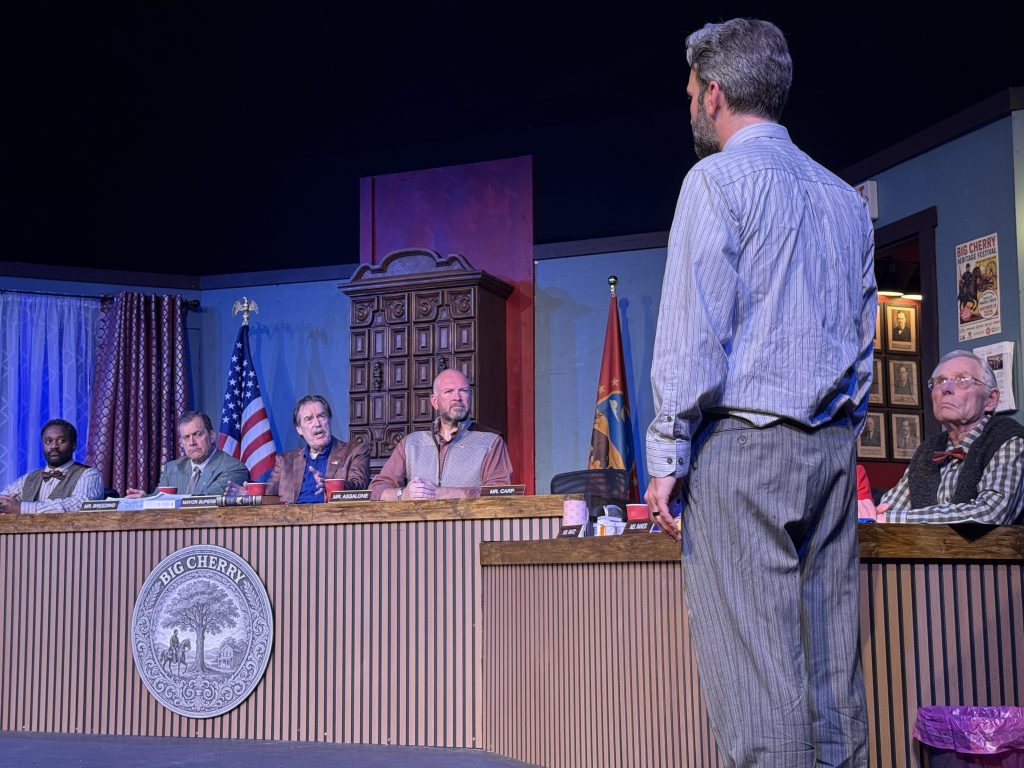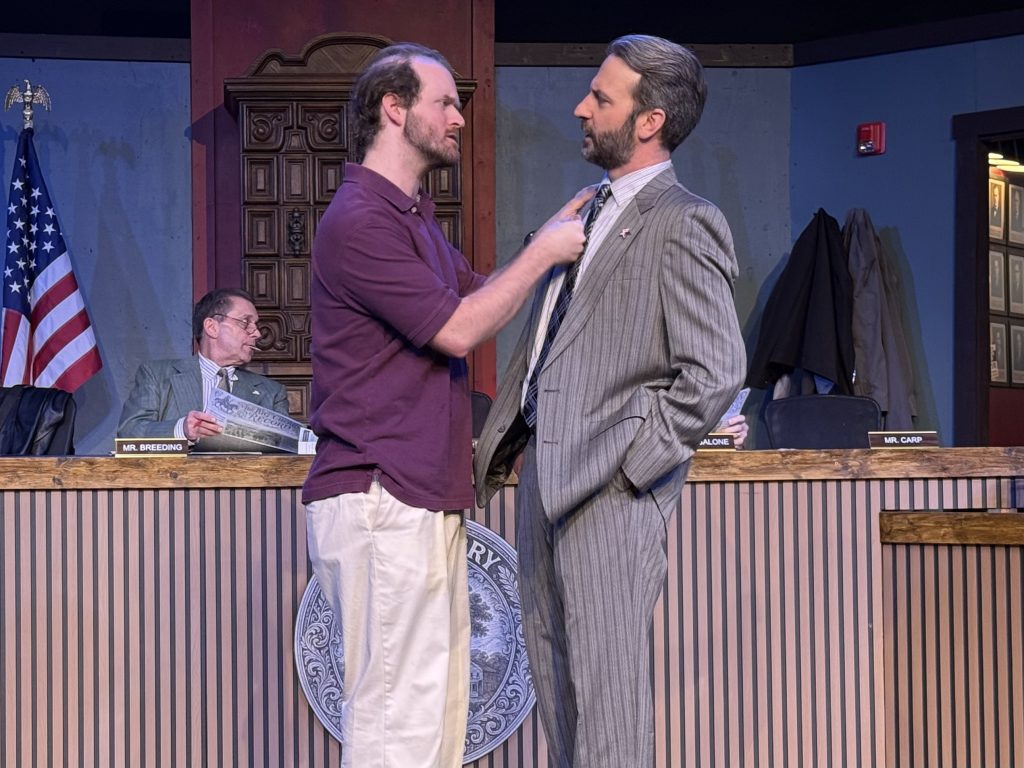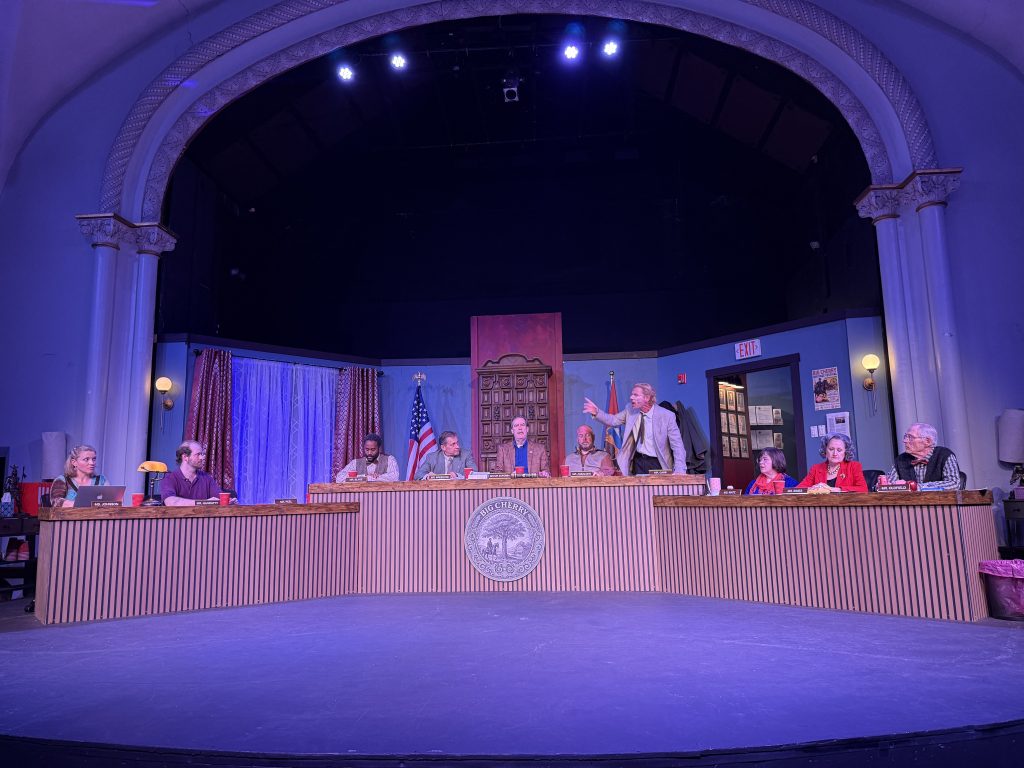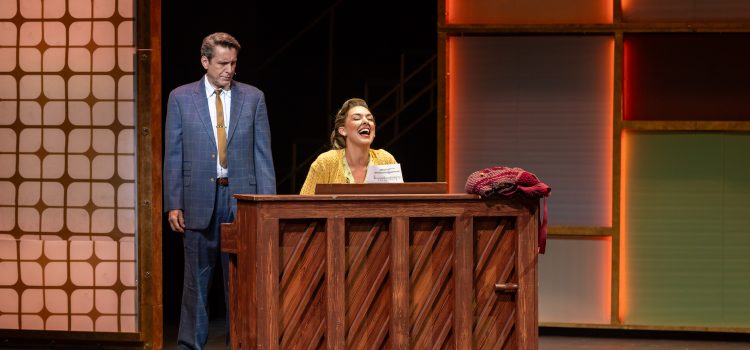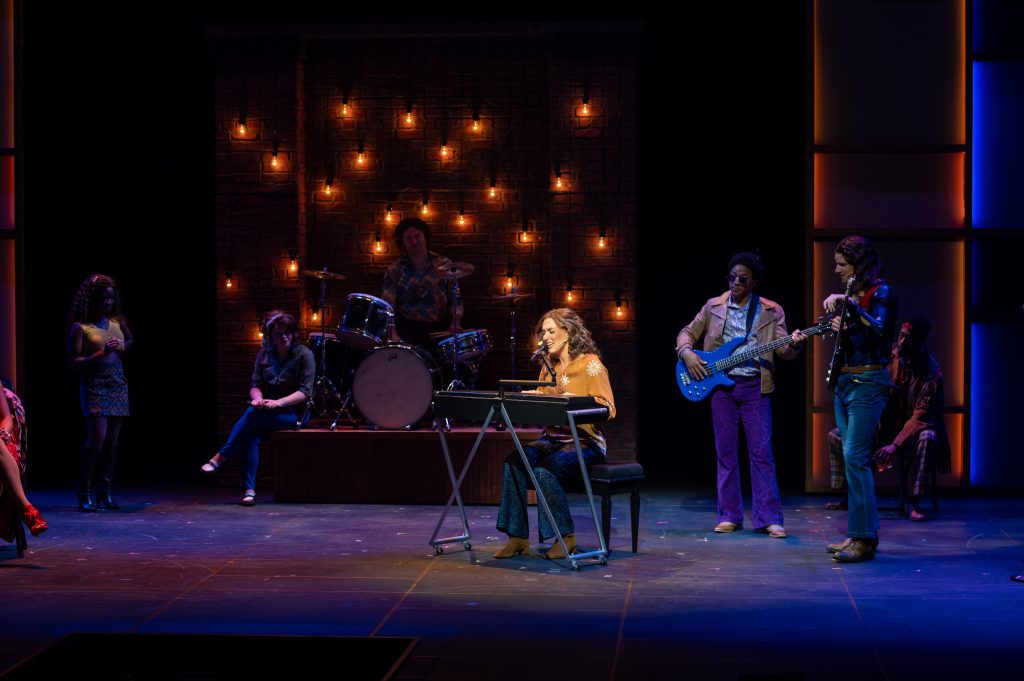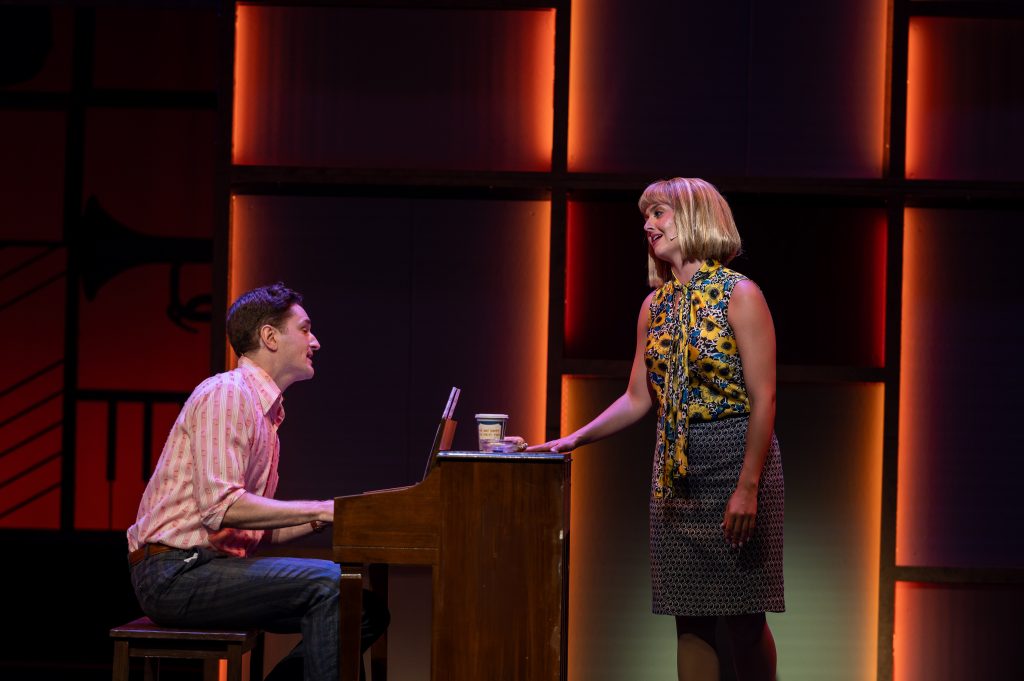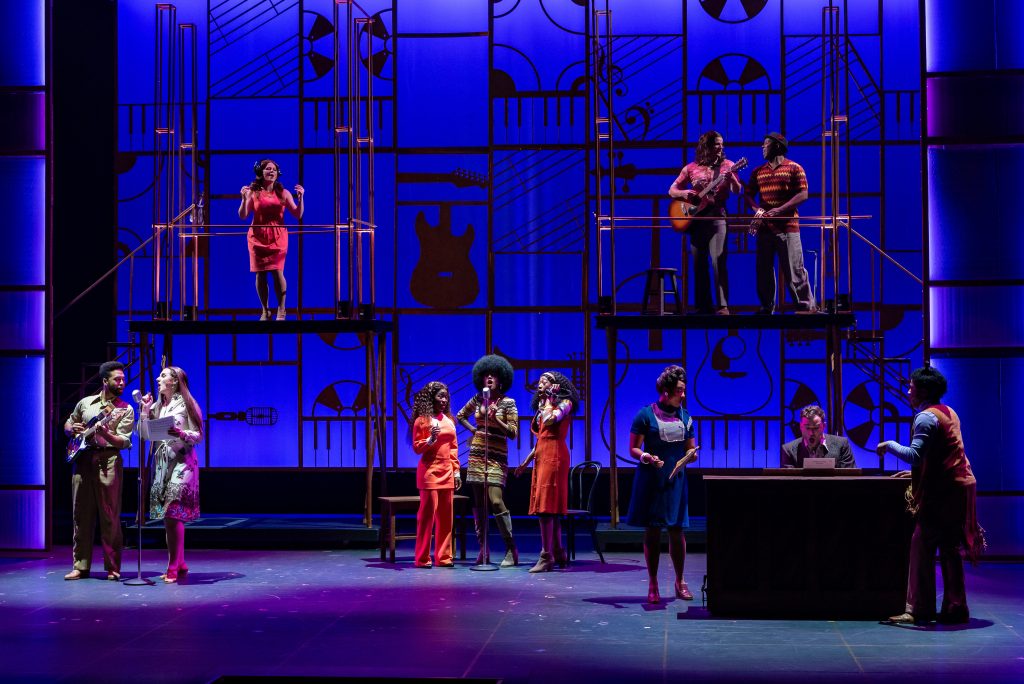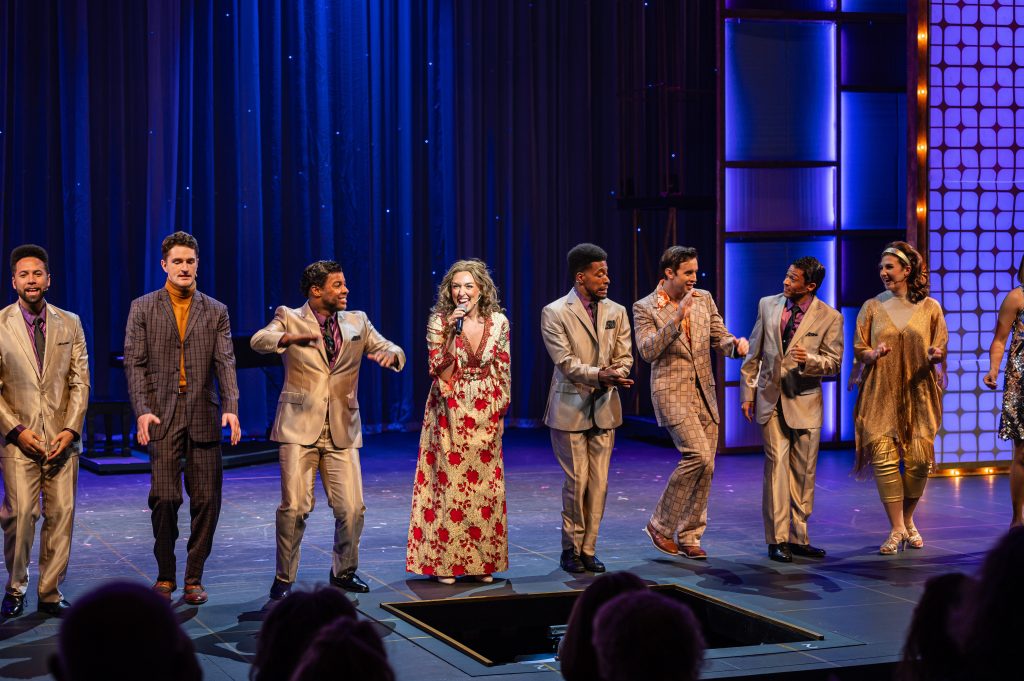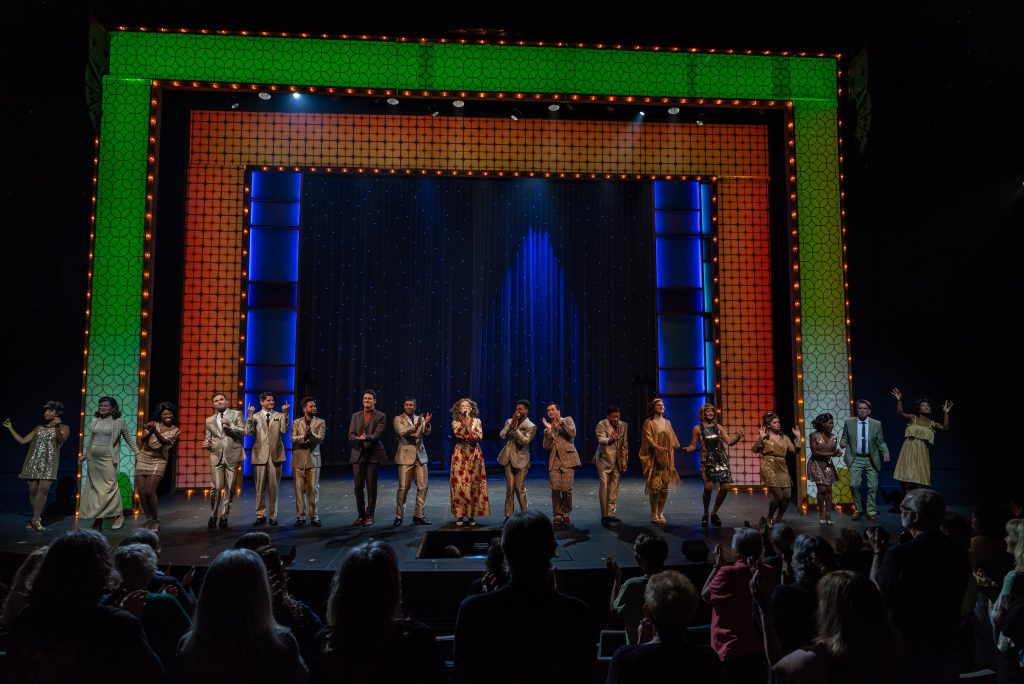By Lynn Venhaus
A fantasy feminist fable that relies more on style than substance, “100 Nights of Hero” is pretty – in people and surroundings – but at times, the story feels too flimsy to be an innovative take on elevating sisterhood over the pompous patriarchy.
Of course, stoking a rebellion is a noble intention from British writer-director Julia Jackman, who adapted Isabel Greenberg’s proudly queer 2016 graphic novel into a fairy tale-adjacent narrative that’s equal parts soap opera and female empowerment.
She drew inspiration from “One Thousand and One Nights,” that Islamic classic that has Sheherazade unhappily married to a murderer who gets rid of his wives – but she lives because of telling him fantastical stories that entrance him so much he keeps her around.
We’re thrust into a vague medieval world where the men in charge keep the women oppressed and pregnant. They are forbidden to read and write. The god-like authoritarian leader, Birdman, is played by Richard E. Grant as an irritating prig. His boorish devotees wear silly papier-mâché bird’s beaks in reverence.
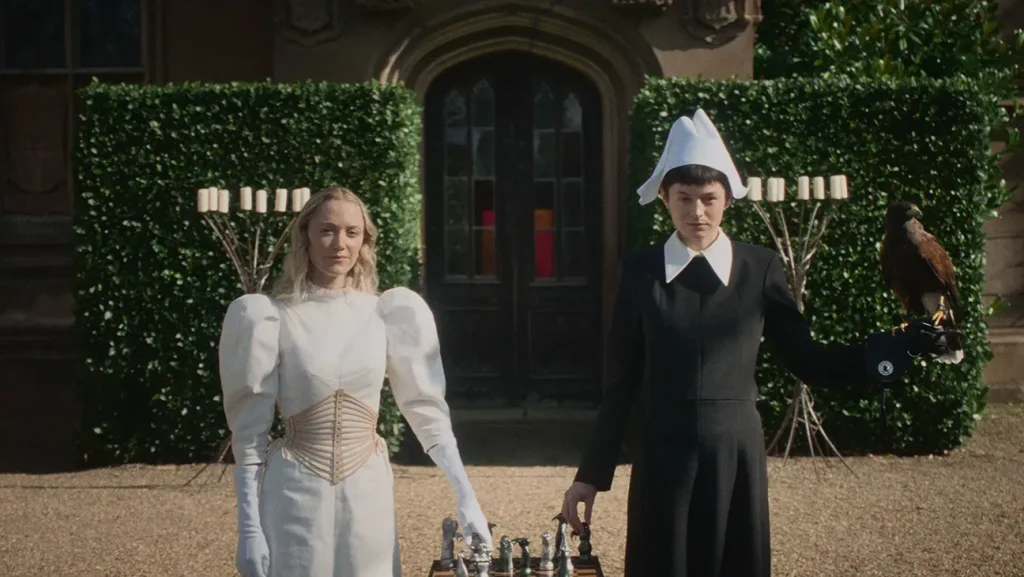
The outraged elders demand Cherry, a virtuous bride, and her jerk of a husband, Jerome, some sort of nobility who resides in a coveted castle, get busy procreating. They take them to task because they are not “with child,” and set a deadline of 101 days to do ‘the deed.’
Maika Monroe is the beauteous lady of the manor who hasn’t conceived yet because the self-important spouse (Amir El Masry) rebuffs her every evening before they retreat to separate quarters. But he pretends he’s virile and everything is dandy — we get a feeling that he’s not interested in girls – or anyone other than himself. Hmmm…
Manfred, a womanizing guest, is played smugly by Nicholas Galitzine, reverting to a swaggering cad role after being so charming in “The Idea of You” and “Red, White and Royal Blue.” Convinced of his irresistibility, he agrees to an odious bet with Jerome, who’s going away on hazy business.
If he can seduce Cherry, he gets her and the castle, but if not, Jerome gets Manfred’s inferior abode but has to find him a baby. That is what’s at stake as the clock ticks.
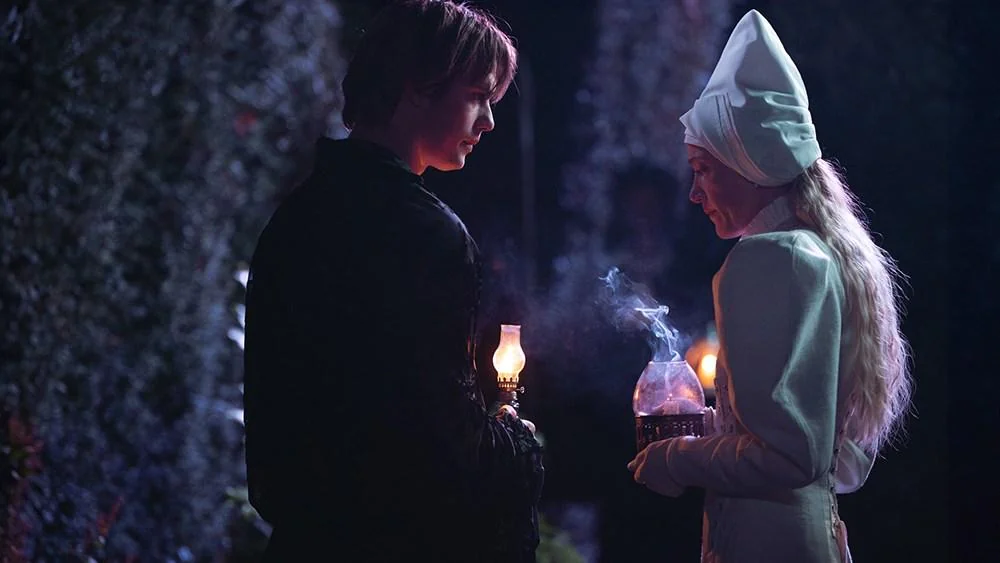
Let’s see the women revolt! However, we must wait, because the story unfolds slowly. Uneven in tone, it’s a jumble of playful camp, sauciness, turgid desire and emboldened defiance.
With its blend of a bodice-ripping scenario from ‘80s romance novels with exotic Arabian Nights from the Middle Ages for the bulk of the film, then it veers into dark, dire consequences in the third act.
Manfred tries to woo Cherry in traditional ways, and subtle flirting begins — but the courting is painfully drawn out. The attractive duo, Galitzine and Monroe, must ramp up the sexual tension because they are thwarted by social mores and manners, and writhe separately in agony. Shades of Skinemax after dark!
Another obstacle to their presumed illicit coupling is Cherry’s maid Hero (Emma Corrin, a severe, pious but clever sort.) Hero has become an accomplished storyteller, and weaves riveting tales that enchant the locals, including the guards. Hero has sized up Manfred as a wolf and therefore provides much needed distraction before he can bed milady.
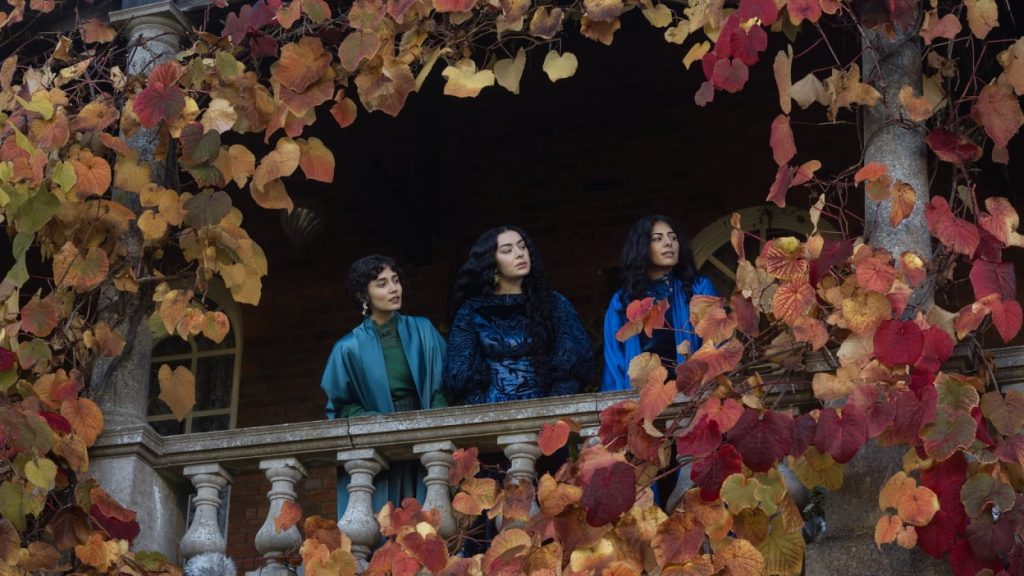
As Hero is entertaining with words, pop star Charli XCX appears as an unlucky bride wearing fabulous gowns. She’s Rosa, one of three sisters who are literate, and form a secret female society who collect and record stories.
Credit costume designer Susie Coulthard and production designer Sofia Sacomani for imaginative work. They have created sumptuous worlds to go along with a storyteller’s world-building.
No one should be surprised when Cherry is attracted to Hero, which is a change from the book, because in it they’re already lovers. Suddenly it becomes clear that gender, status and power are at play – but that the women will face consequences for not only same-sex coupling but having no shame or remorse.
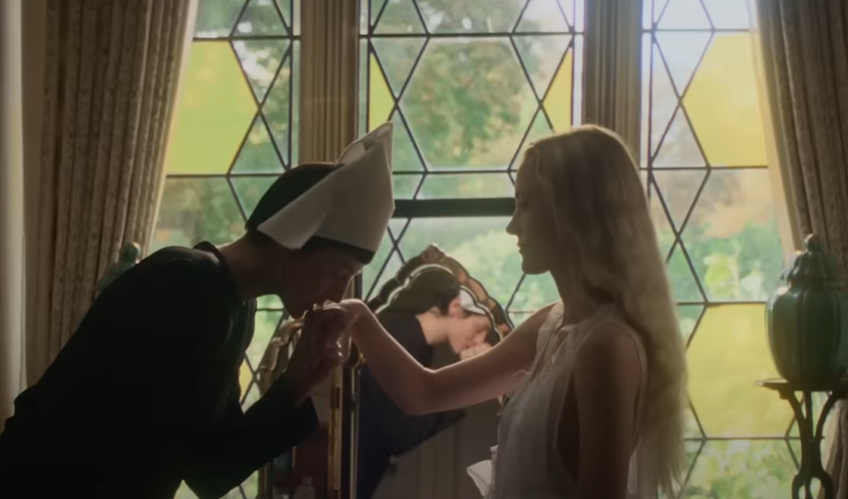
The cast understands the assignment – and Felicity Jones appears in a cameo, so they dutifully carry out their roles. Feminists will cheer that the women want equal rights as much as a woman-driven utopia.
However, as a unifying anthem, the film waited too long to make a bold statement– and while motivation is always welcome, why dilly-dally instead of starting the rallying cry early?
Nevertheless, give credit for showing that women can conjure their own happily ever after for themselves.
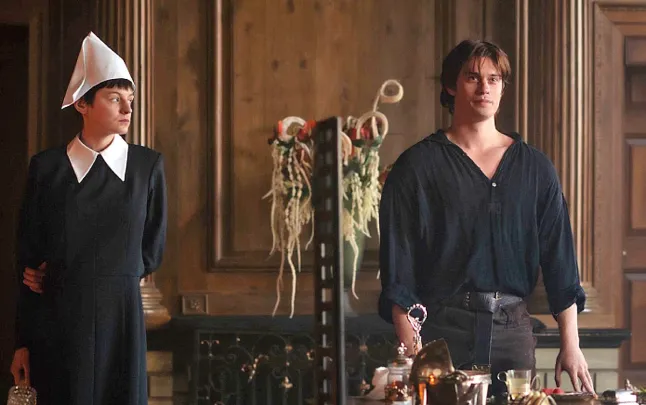
“100 Nights of Hero” is a 2025 period drama-fantasy-romance written and directed by Julia Jackson and starring Maika Monroe, Emma Corrin, Nicholas Galatzine, Amir El-Masry, Charli XCX, Richard E. Grant and Felicity Jones. It is rated PG-13 for sexual material, some bloody images and language.and runtime is 1 hour 31 minutes. It opened in theatres Dec. 5. Lynn’s Grade: C-,

Lynn (Zipfel) Venhaus has had a continuous byline in St. Louis metro region publications since 1978. She writes features and news for Belleville News-Democrat and contributes to St. Louis magazine and other publications.
She is a Rotten Tomatoes-approved film critic, currently reviews films for Webster-Kirkwood Times and KTRS Radio, covers entertainment for PopLifeSTL.com and co-hosts podcast PopLifeSTL.com…Presents.
She is a member of Critics Choice Association, where she serves on the women’s and marketing committees; Alliance of Women Film Journalists; and on the board of the St. Louis Film Critics Association. She is a founding and board member of the St. Louis Theater Circle.
She is retired from teaching journalism/media as an adjunct college instructor.

